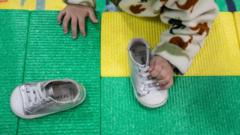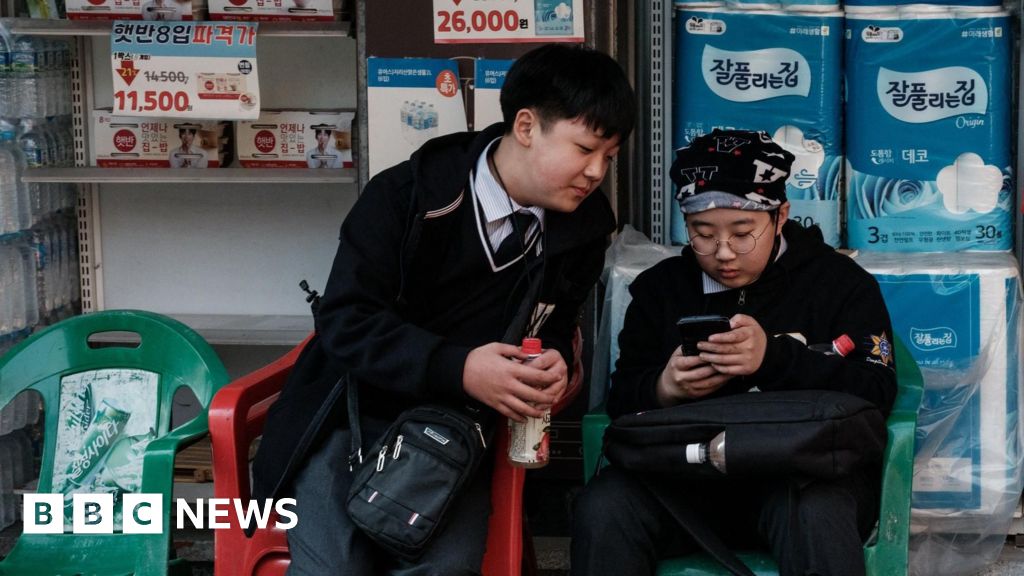In South Korea, notorious for holding the title of the world's lowest birth rate, fertility clinics are experiencing a remarkable surge in demand. Kim Mi-ae, a 36-year-old from Seoul, who initiated in vitro fertilization (IVF) last November, shared her surprise at the lengthy waits the clinics are facing. “With a reservation, I still had to wait over three hours,” Kim noted, citing an influx of couples seeking treatments in the New Year.
According to recent data, from 2018 to 2022, the number of fertility treatments surged nearly 50%, culminating in 200,000 procedures last year, with one in six babies born in Seoul now conceived with assistance. Experts attribute this boom to a generational shift in attitudes toward family planning, particularly among younger South Koreans eager to take control of their reproductive choices.
South Korea's declining birth rates have been a significant worry for the government, which is working to combat this demographic slump as approximately 20% of its population is now aged over 65. Record-breaking figures were recorded recently, with the birth rate plunging to 0.72 babies per woman in 2023. However, a flicker of optimism emerged in 2024 as the birth rate edged up to 0.75, marking the first increase in nearly a decade.
For many women, the path to motherhood includes challenges such as delayed childbearing due to financial pressures and long working hours. Individuals like Park Soo-in, who balanced her advertising career and overtime jobs, only began contemplating motherhood after marriage and a conducive work environment.
Despite their desire for children, over half of South Koreans report financial barriers as preventing family growth, with women waiting until they’re an average age of 33.6 to have their first child. Kim expressed how societal expectations meant preparing themselves in their youth only to find themselves delayed when it comes to settling down to start families.
Though fertility treatments can be financially burdensome—with costs averaging around 1.5 million won per cycle—there is a growing recognition of the need for support. The government has initiated subsidies for egg freezing and IVF procedures, but for many women like Jang Sae-ryeon, these subsidies are often insufficient to cover the entire financial burden.
In a cultural landscape where workplace commitments clash with the demands of fertility treatments, many women, including Kim and Jang, have faced additional challenges. Jang described the frustration of balancing IVF with her job, a struggle that led her to resign.
Despite the hurdles, the pursuit of parenthood carries hopes and dreams that remain undeterred. Jang reflects on her aspirations, highlighting the profound joy that comes with creating a family. As South Korea navigates its conflicting societal norms and personal desires, the path forward depends on the future perceptions of motherhood and parenthood amongst its youth.
According to recent data, from 2018 to 2022, the number of fertility treatments surged nearly 50%, culminating in 200,000 procedures last year, with one in six babies born in Seoul now conceived with assistance. Experts attribute this boom to a generational shift in attitudes toward family planning, particularly among younger South Koreans eager to take control of their reproductive choices.
South Korea's declining birth rates have been a significant worry for the government, which is working to combat this demographic slump as approximately 20% of its population is now aged over 65. Record-breaking figures were recorded recently, with the birth rate plunging to 0.72 babies per woman in 2023. However, a flicker of optimism emerged in 2024 as the birth rate edged up to 0.75, marking the first increase in nearly a decade.
For many women, the path to motherhood includes challenges such as delayed childbearing due to financial pressures and long working hours. Individuals like Park Soo-in, who balanced her advertising career and overtime jobs, only began contemplating motherhood after marriage and a conducive work environment.
Despite their desire for children, over half of South Koreans report financial barriers as preventing family growth, with women waiting until they’re an average age of 33.6 to have their first child. Kim expressed how societal expectations meant preparing themselves in their youth only to find themselves delayed when it comes to settling down to start families.
Though fertility treatments can be financially burdensome—with costs averaging around 1.5 million won per cycle—there is a growing recognition of the need for support. The government has initiated subsidies for egg freezing and IVF procedures, but for many women like Jang Sae-ryeon, these subsidies are often insufficient to cover the entire financial burden.
In a cultural landscape where workplace commitments clash with the demands of fertility treatments, many women, including Kim and Jang, have faced additional challenges. Jang described the frustration of balancing IVF with her job, a struggle that led her to resign.
Despite the hurdles, the pursuit of parenthood carries hopes and dreams that remain undeterred. Jang reflects on her aspirations, highlighting the profound joy that comes with creating a family. As South Korea navigates its conflicting societal norms and personal desires, the path forward depends on the future perceptions of motherhood and parenthood amongst its youth.



















